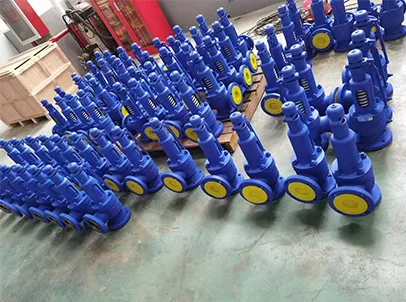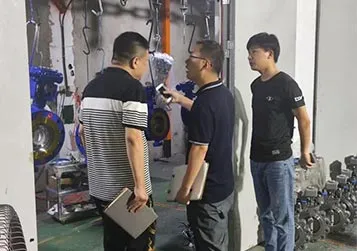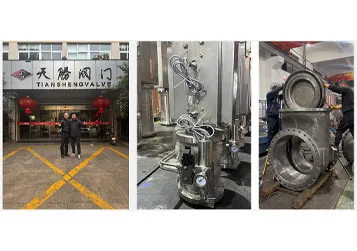- Email:info@tsv-valve.com

 Oct 18,2025
Oct 18,2025When it comes to industrial flow control—whether for water treatment, oil and gas, or HVAC systems—choosing between a butterfly valve and a ball valve is a critical decision. The wrong choice can lead to inefficiency, frequent maintenance, or even system failures. But here’s the truth: neither valve is universally “better”—their performance depends entirely on your specific application. This guide breaks down their key differences, advantages, and ideal use cases to help you pick the right valve for your needs.
Before comparing, let’s clarify how each valve works—this foundational knowledge is key to understanding their strengths.
A butterfly valve uses a rotating disc (shaped like a butterfly wing) at its core. When the disc is turned parallel to the flow, the valve is fully open; when perpendicular, it’s closed. Most models operate with a 90-degree rotation, making them fast to actuate. They’re typically lightweight, compact, and designed for large-diameter pipes (often 2 inches or larger).
Common materials include ductile iron, stainless steel, or PVC (for corrosive media like chemicals or wastewater). They’re widely used in low-to-medium pressure systems where space and cost are priorities.
A ball valve relies on a hollow, spherical ball with a hole through its center. Rotating the ball 90 degrees aligns the hole with the pipe (open) or blocks the flow (closed). The ball’s design creates a tight seal, making them ideal for shut-off applications. They’re available in small to large diameters (from ¼ inch to 48 inches) and are often made of brass, stainless steel, or PTFE-lined materials for chemical resistance.
Ball valves excel in high-pressure, high-temperature environments and are known for their long service life with minimal maintenance.
To answer “Is a butterfly valve better than a ball valve?,” let’s compare them across 5 critical factors for industrial use:
|
Factor |
Butterfly Valve |
Ball Valve |
|
Flow Control |
Good for throttling (partial flow) in large pipes. The disc’s design creates less pressure drop at full open, but precision throttling (e.g., 10-20% open) can cause vibration. |
Excellent for on/off control—no leakage when closed. Poor for throttling: partial opening creates high velocity, which erodes the ball and seat over time. |
|
Pressure & Temperature |
Best for low-to-medium pressure (up to 1,000 PSI) and temperatures (up to 400°F). Not suitable for ultra-high-pressure systems (e.g., oil pipelines). |
Handles high-to-ultra-high pressure (up to 10,000 PSI) and extreme temperatures (up to 1,000°F). Ideal for harsh conditions like steam or hydrocarbon flow. |
|
Size & Installation |
Compact and lightweight—fits in tight spaces. Low cost for large diameters (e.g., 12-inch butterfly valves are cheaper than 12-inch ball valves). |
Bulkier and heavier than butterfly valves. Higher cost for large diameters, but easier to install in small pipes (e.g., residential plumbing). |
|
Maintenance & Durability |
Simple design with fewer moving parts—easy to repair. However, the disc and seat can wear faster if used with abrasive media (e.g., slurry). |
Durable with a tight, non-wearing seal (when used for on/off only). Requires less frequent maintenance, but repairs (e.g., replacing the ball or seat) are more complex and costly. |
|
Media Compatibility |
Great for water, wastewater, air, or low-viscosity chemicals. Avoid abrasive or viscous media (e.g., cement slurry) that can damage the disc. |
Versatile for most media: oil, gas, chemicals, steam, and even some abrasive fluids (if using hardened materials like ceramic). |
Let’s map these differences to real-world applications—this is where the “better” choice becomes clear:
Winner: Butterfly Valve
Water treatment requires large-diameter pipes (8-24 inches) and frequent throttling to adjust flow rates. Butterfly valves are cost-effective, lightweight, and create minimal pressure drop—perfect for moving clean water or wastewater. For example, a 16-inch butterfly valve costs 30-50% less than a ball valve of the same size and fits easily in tight plant spaces.
Winner: Ball Valve
Oil and gas systems operate at high pressure (5,000+ PSI) and temperatures. Ball valves’ tight seal prevents leakage of flammable hydrocarbons, and their durability resists corrosion from crude oil. They’re also ideal for on/off control in wellheads or pipeline shut-off stations.
Winner: Butterfly Valve
HVAC uses low-pressure water or air flow and requires frequent throttling (e.g., adjusting heating/cooling output). Butterfly valves are compact enough to fit in ductwork or small pipes, and their quick 90-degree actuation pairs well with automated HVAC controls.
Winner: Ball Valve (for most cases)
Chemical plants handle corrosive or toxic media (e.g., acids, solvents). PTFE-lined ball valves create a leak-proof seal and resist chemical damage. While butterfly valves can work for non-corrosive chemicals, they’re riskier for toxic fluids—any leakage could cause safety hazards.
Winner: Ball Valve
Small-diameter pipes (½-2 inches) for sinks, toilets, or water heaters need reliable on/off control. Ball valves are cheap, easy to install, and rarely leak—unlike butterfly valves, which are overkill for small-scale use.
If you’re still unsure, use this simple checklist to narrow down options:
Define your media and conditions: What fluid/gas are you controlling? What’s the operating pressure (PSI) and temperature (°F)? For high pressure/temp or toxic media, lean toward ball valves. For low pressure or large diameters, butterfly valves are better.
Prioritize function: Do you need on/off control (ball valve) or throttling (butterfly valve)? If you try to throttle with a ball valve, you’ll face premature wear; if you need a tight shut-off with a butterfly valve, choose a high-performance model (e.g., double-offset butterfly valves).
Calculate total cost: Don’t just look at the purchase price. Butterfly valves have lower upfront costs but may need more frequent seat replacements. Ball valves cost more initially but have longer lifespans—factor in maintenance and downtime to find the better long-term value.
To circle back to the original question: “Is a butterfly valve better than a ball valve?” The answer is no—one is better for your specific needs. A butterfly valve saves money and space in water treatment or HVAC, while a ball valve ensures safety and durability in oil, gas, or chemical systems.
The key is to match the valve’s strengths to your system’s requirements. If you’re still stuck—whether you need a valve for high-pressure pipelines or a small commercial project—consult a trusted valve supplier. They can analyze your setup, recommend materials (e.g., stainless steel vs. PVC), and even provide custom solutions to optimize flow control.
Ready to find the right valve? Reach out to our team today for a free consultation (selection consultation) and get a quote tailored to your industry.
Related News




GET A QUOTE
Talk to Our Expert